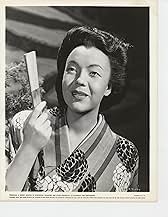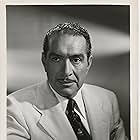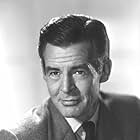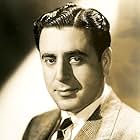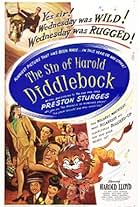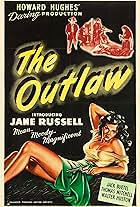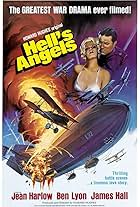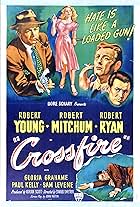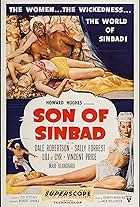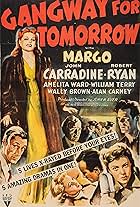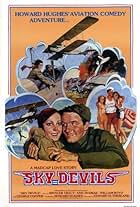In Japan, foreigners and their Japanese friends are caught up in the rising tide of militarism.In Japan, foreigners and their Japanese friends are caught up in the rising tide of militarism.In Japan, foreigners and their Japanese friends are caught up in the rising tide of militarism.
- Clancy O'Hara
- (as Don Douglas)
- Japanese Officer Murdering Takahashi
- (uncredited)
- Inspector
- (uncredited)
- Japanese Swordsman
- (uncredited)
- Japanese Girl
- (uncredited)
- Takahashi
- (uncredited)
- Japanese Officer with Message
- (uncredited)
- Dinner Guest
- (uncredited)
- Geisha Girl
- (uncredited)
- Director
- Writer
- All cast & crew
- Production, box office & more at IMDbPro
Storyline
Did you know
- TriviaA B-grade exploitation flick produced for $240,000, "Behind the Rising Sun" (1943) did A-level business at the box office, grossing $1.5 million. This was director Edward Dmytryk's second such hit for RKO that year, following the surprise blockbuster "Hitler's Children" (1943). Over the next four years Dmytryk gained the nickname "Mr. RKO" for consistently turning out profitable films for that studio.
- GoofsDuring the bombing of Tokyo, presumably the Doolittle raid, B-17 "Flying Fortresses" ( a heavy bomber) are shown carrying out the attack. The Doolittle raid was carried out by B-25 bombers, a medium bomber, launched from the aircraft carrier, USS Hornet.
- Quotes
Reo Seki: Do you know what this is?
Taro Seki: Of course. It's an air map. Say, it's a swell one too.
Reo Seki: You did some flying while you were in college, did you not?
Taro Seki: Yes, I had a pilot's licence.
Reo Seki: Good. Then you will understand quite easily.
Reo Seki: Observe, my son, when the Earth is spread out flat like the very air itself how there is no place in the world more than 60 hours from any other place, then Japan is no longer a little island at the end of beyond. Japan is the very centre of the universe. For the best airlanes lie to the north: Russia, Europe and North America. And we shall be masters of the north and of the east as well. That is quite inevitable.
Taro Seki: That's taking a lot for granted, isn't it?
Reo Seki: Not when you know your geography. Observe again: this is the heartland. Who holds the heartland, holds the world. For here is one fourth of the Earth's surface and one half of its population. Now take a good look, my son, and ask yourself: who is best fitted to hold the heartland? India, China or Japan? Who, in fact, is best fitted to hold the very world itself?
Taro Seki: But surely, Dad, you don't go for that stuff? Who would want to hold the world, even if he could?
Reo Seki: There was a time, my son, when we used to say: "Asia for the Asiatics". That was before we knew our strength. The white man is not only in the minority here; he is in the minority throughout the entire world. And the time will come when we shall see who is the master and who is the slave. That will be a great hour my son. It will belong to Japan. And Japan alone.
Taro Seki: But this isn't the Japan I've come home to work for.
Reo Seki: It is the only Japan there is. We must all rise with it or all perish with it.
- ConnectionsFeatured in Hollywood the Golden Years: The RKO Story: Dark Victory (1987)
- SoundtracksAlma Mater
(ca 1870) (uncredited)
(Cornell University's Marching Song)
Music by H.S. Thompson from his ballad "Annie Lisle" (1857)
Lyrics by Archibald Croswell-Weeks and Wilmot Moses Smith (ca 1870)
Sung by Tom Neal a cappella
This distinction opens the possibility that a reformed social order with better values and socializing process can produce a more modern and democratic people better attuned to Western ideals (Tama, Reo, & the early Taro). The end result thus suggests that the Japanese people may be human after all, yet suffering from what may be termed a "social disorder"-- A disorder that a good dose of American-style democracy can remedy under an astute post- war occupation regime, such as Gen. MacArthur's turned out to be. Now, no matter how self- congratulatory these political assumptions may be, the result turns out to be shrewdly visionary in an historical sense.
Of course, this is a pretty heavy load for what is essentially an RKO programmer. Nonetheless, the subtext plays out in a screenplay more shaded than most. I suspect audiences expecting something more typically simplistic were a bit put off by the ambiguities. Still and all, there are familiar American stereotypes to anchor the audience—the good-hearted Irishman (O'Hara), the competitive sportsman (Lefty), and the enterprising reporter (Sara). Revealingly, they're shown as getting along quite well with those liberally minded Japanese who will share power during the post-war period.
This mixture of crude stereotype along with the more subtle humanizing aspect creates a rather awkward combination that doesn't work very well for the movie as a whole. Perhaps this is why the film remains pretty obscure in movie annals. Nonetheless, two episodes remain memorable for me. It's easy to overlook architect O'Hara's passing observation about sturdy Western construction materials. These, he points out, can withstand natural calamities that Pacific islands are prone to, such as earthquakes and floods, better than traditional, less substantial, Japanese materials. To me, this illustrates the potentials of a genuinely cooperative internationalism outside this particular one-sided context. Also, the central action scene of a gangly American boxer (Ryan) vs. a Japanese martial arts expert (Mazurki) may not be very convincing, but it certainly is eye-catching.
Now, I'm in no position to judge the historical accuracy of the events depicted here and claimed as fact-based by the prologue. Nonetheless, the movie remains an interesting one for its generally humane message in a time of real war.
- dougdoepke
- Sep 18, 2009
- Permalink
- How long is Behind the Rising Sun?Powered by Alexa
Details
Box office
- Budget
- $239,000 (estimated)
- Runtime1 hour 28 minutes
- Color
- Aspect ratio
- 1.37 : 1
Contribute to this page



